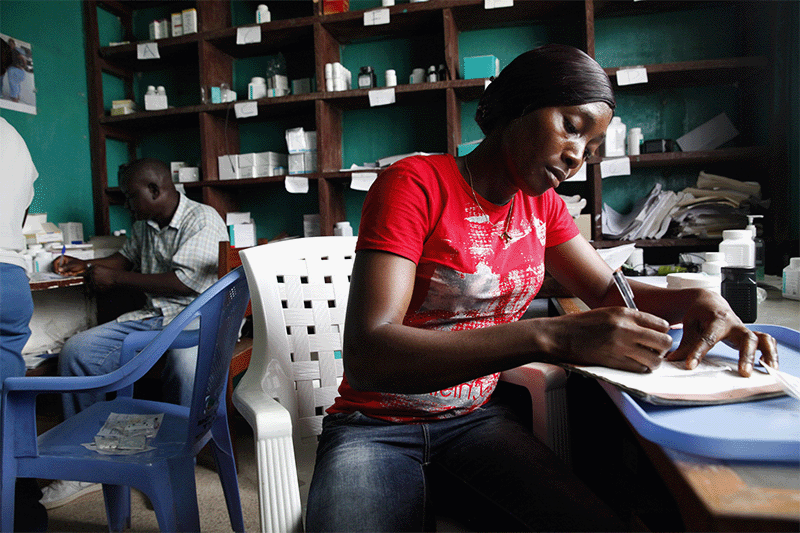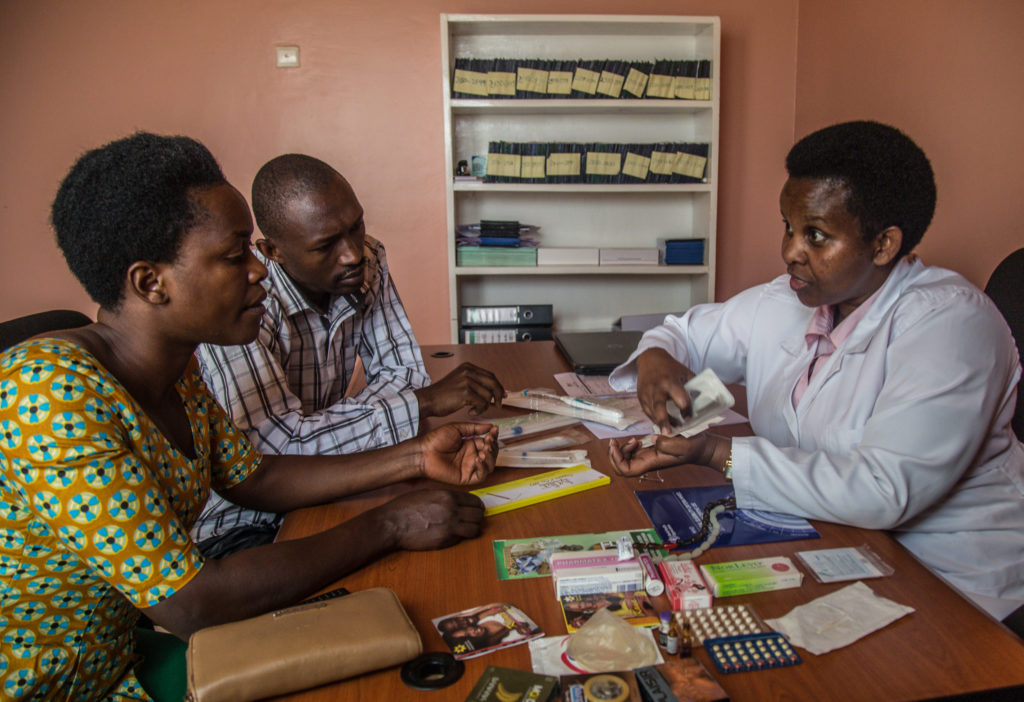Analyzing the impact of gender inequities on contraceptive decision-making experiences through the lens of a power framework can provide critical insights. These can give programs a better understanding of how to address barriers to women and girls’ access to and use of contraception.
For voluntary family planning programs to be effective, they must consider the ways in which gender norms influence and interact with family planning decisions. Gender norms describe how people of a particular gender are expected to behave in a given social context. They influence everything from the quality of family planning care to the ability of women and girls to make decisions about whether and when to use family planning, including which method.
Definitions of Power
What do we mean by power? Power is context-specific; a person or group may experience different levels of power depending on their situations. In addition, power is relational, which means that it changes in response to the people and social factors present. We can describe four types of power:
Power Over
Power over is most easily recognizable for many and refers to the domination of one person or group over another person or group. Power is viewed as an absolute win-lose relationship—for one to gain power, another loses it.
Power Within
Power within is a person’s sense of self-worth, self-confidence, and a realization that they can act on something.
Power To
Power to is the ability of a person to shape their life and influence the world around them, the ability to take action and affect change.
Power With
Power with is the social power that allows for collective action. Power is based on social support and collaboration to create change.
Power within, power with, and power to are all related to a sense of agency and self-efficacy. Self-efficacy refers to one’s belief that they are capable of a task, and agency refers to the belief that one has power to attain a goal through action. That is, if one thinks they can do a task, then their self-efficacy is high; however, even if they believe they can do this task, yet nothing changes because of outside forces that limit change, then they don’t have agency.

How Do Power and Gender Intersect?
Intersectionality, a term coined by Kimberlé W. Crenshaw, is a term often applied to work in the gender field and implies that gender does not occur in a vacuum outside of other social identifications and societal structures (such as a person’s race or economic status). It allows for and takes into consideration the existence of multiple and often equally important influences affecting a person’s experience.
The concept of intersectionality can be applied to gender and power as well. Gender norms are, by their nature, expressions of power dynamics within a society, and all forms of power are shaped by constructive or negative gender norms. Negative gender norms often serve to uphold those who have traditionally held power over others (in patriarchal societies, this group is men), and take away others’ (in patriarchal society, this group is women) sense of self-worth or feeling of agency (power within) and the ability to make decisions about their own lives (power to). Constructive gender norms advance gender equity and negative gender norms seek to uphold gender inequity. For example, a constructive gender norm would support women deciding who and when to marry, just as men are able to do in many contexts. However, a negative gender norm would support women not being able to decide who or when to marry, while this same choice is afforded to men. Therefore, power is inherently gendered and gender norms are inherently “powered.”
Why Does the Intersection of Gender and Power Matter to Family Planning Programs?
The relationship between gender and power helps to explain how in different contexts, agency develops—or doesn’t. For family planning programs, gender and power influence women’s contraceptive decision-making agency, or the ability to independently and freely make decisions regarding if and when to use contraception and which methods to use. This helps programs understand when and why women use contraception, and the people who influence that decision.
Power relations transpire during multiple aspects of decision-making. The decision itself (power to) is an example of the power to take action and use a particular contraceptive method, the power to affect change in her life. The control to make this decision is an example of power over—for example, the power a mother-in-law or sister-wife may or may not have over a woman’s decision to use a contraceptive method due to her position in the family.
Power dynamics are not limited to interactions between men and women: women can often exert power over other women, whether intentionally or inadvertently, thus re-enforcing patriarchial structures that serve to diminish all women’s capacity to make decisions. This is influenced by gender norms such as those that support a mother-in-law’s or sister-wife’s control not only over the decision itself, but also control of mobility, interactions with health care personnel, and/or household and personal finances. The belief that one can make this decision—for example, a woman’s sense of self-confidence and belief in her ability to use a contraceptive method—is an example of power within.
In addition, power also relates to the sense of engaging with others to create positive systemic change in contraceptive decision-making (power with). We can see this in the power of a woman to advocate for change to policies and community norms to better support other women and girls and their family planning needs.
In examining programs and projects through a gender and power lens, useful questions would therefore include:
- What gender group(s) have power in a given context?
- How does this power affect others around them (both within the dominant gender and outside of it)?
- What are the gender norms that impact power within a person?
Explore the impact of gender and power on contraceptive access via a story about a woman named Aria.
Increasing women’s agency—the power within themselves to believe they have the ability to make a decision—is difficult without also addressing the social norms that either support or hinder this increase in agency. In certain instances, this can be dangerous to the safety of women living in contexts that violently oppose an increase in women’s agency. Therefore, programs must not work in a vacuum, and must also look at challenging contextual factors that contribute to beliefs surrounding women’s current agency.
Click each type of power for examples of how programs can address social norms to strengthen Aria’s agency within her societal context.
POWER OVER
- Couples counseling to address Matthew’s beliefs and perceptions
- This couples counseling is designed to address negative gender norms that persist in the community and that influence both Matthew and Aria.
- Male role models and community dialogues
- Engaging religious leaders in challenging harmful gender norms
- Counseling aimed at first-time parents or married adolescents
POWER TO
Activities that support women and girls’ access to information and care, including transportation, confidential appointments, and adding questions about voluntary family planning to routine visits to a clinic or health center.
POWER WITHIN
- Group-based mentoring with other women in the community that is designed to increase women’s overall agency
- Individual voluntary family planning counseling with Aria that includes discussions on participation/voice in overall decision-making, including health decision-making, and improved agency.
-
- FP counseling includes information about gender norms and power dynamics among couples
-
- Multi-sectoral approaches that improve women’s livelihoods such as income-generation activities, communal female banks, cooperative land, and agriculture titles for women’s groups
POWER WITH
Formation of women’s groups that support reproductive health care and advocate for changes in policies at the local level.
Using a Gender and Power Framework in Practice
Masculinité, Famille, et Foi (Masculinity, Family and Faith) DRC and Rwanda, Tearfund, Passages Project
Tearfund and the Passages Project engaged with faith leaders and faith-based organizations, implemented community dialogues with couples, and provided trainings and workshops to address inequitable gender norms that constrain family planning use and contribute to early marriage and high levels of interpersonal violence (IPV). The project included critical reflection exercises on the use of power in decision-making, power dynamics in gender roles, and accountability during workshops, trainings, and community dialogues with couples and faith leaders.
Among those exposed to the project:
- Modern contraceptive use increased.
- Perceptions of community approval of men’s role in chores and childcare increased.
- The numbers of participants who felt that “a wife can express her opinion even if her husband disagrees” increased.
- Perceptions of community approval of IPV decreased among men and women.
A gender and power framework can provide important insights into the ways in which gender norms affect contraceptive decision-making, and can be a useful tool to design effective voluntary family planning programs that actively work to change and challenge negative gender norms. Gender-transformative programs seek to transform gender relations to promote equality. Fundamentally these programs, by challenging and changing negative gender norms, strengthening and creating positive gender norms, and creating structures that support gender equality, are reshaping power dynamics and improving women’s ability and agency to make decisions, including those related to family planning and reproductive health.






